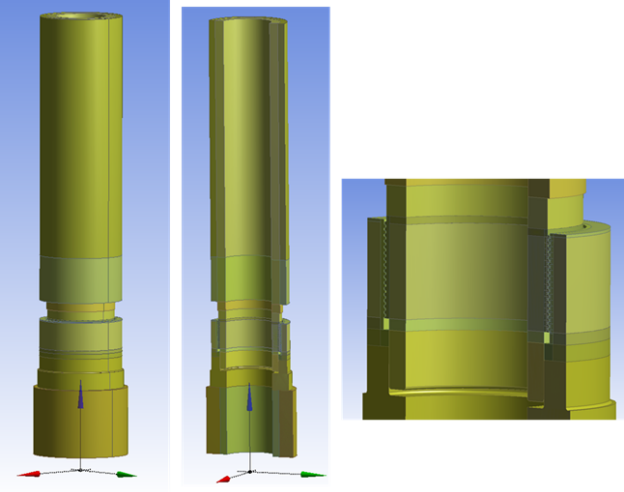Following is the geometry of the threaded-connection model used in this example problem:
The analysis is a three-step process:
Step 3 : Continue the analysis on the 3D threaded-connection model under bending load.
The geometry and loadings in the first step are axisymmetric, so the analysis begins with a 2D axisymmetric model to solve for internal pressure and tensile loadings. Using a 2D to 3D analysis, the 2D deformed mesh is extruded to a new 3D mesh and solution results are mapped to the 3D model. The analysis then continues on the 3D model, on which a nonaxisymmetric (bending) load is applied.
Starting the threaded-connection analysis with a 2D axisymmetric model rather than a 3D model:
Requires significantly less computational time.
Facilitates contact-modeling when creating the manual contact pairs.
Lessens the likelihood of convergence issues when solving the 2D model with contact pairs.



